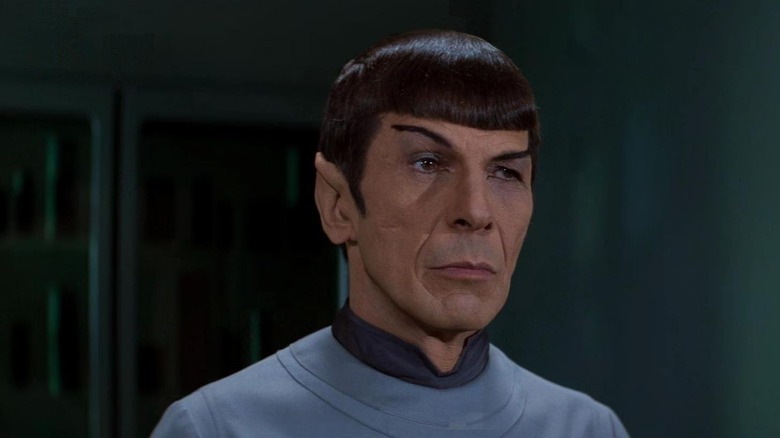Star Trek: The Motion Picture Was Plagued By Injuries And A Threatened Strike
When NBC canceled the cult science fiction series "Star Trek" in 1969, it seemed like the USS Enterprise would be consigned to drydock for good. Then, to the surprise of many in Hollywood, the show became a bona fide hit in syndication, at which point creator Gene Roddenberry was able to convince Paramount Pictures to mount a big-budget motion picture. Robert Wise, a two-time Oscar winner for Best Director (for the musicals "West Side Story" and "The Sound of Music"), was brought on to direct, while Douglas Trumbull, the special effects pioneer who crafted the awe-inspiring imagery of "2001: A Space Odyssey," was hired to deliver the visual razzle-dazzle. Suffice to say, expectations for "Star Trek: The Motion Picture" were several light-years out of this world.
While Wise was no stranger to the sci-fi genre, having directed the classic "The Day the Earth Stood Still" and the very good adaptation of Michael Crichton's "The Andromeda Strain," this was his first time making a spacebound epic. The veteran director was obviously up to the task, but several circumstances largely out of his control turned the production into a bit of an ordeal (among them a threatened strike and multiple on-set injuries). And since he had to deliver a finished film in time to meet a December 1979 release date, these obstacles left him stressing it a little.
Making Star Trek: The Motion Picture was no walk in the park
In the era of digital filmmaking, directors can make editing and visual effects adjustments right up until the last second. This was not the case back in 1979. In an interview with Starlog prior to the release of "Star Trek: The Motion Picture," Wise was quite candid about the challenges before him:
"First, starting without the script being right — that required so many rewrites! And then there was the breakdown of the original special effects group and starting over with another group. All of that with a locked down release date of December 7 ... well, now I think it has been changed to December 8. We are so tight, even now, that if a strike by the stage hands — which has been threatened — lasts more than a couple of days, we won't make it."
Wise met that December 7 deadline, but there were a surprising number of on-set injuries along the way. Per the director:
"We had a number of injuries. A gigantic set at the climax was made out of lights, panels, and plastic forms. Any number of our people fell through it. Finally, somebody put up a board to keep score: Which departments fell through the most — electricians, actors, artists? One electrician, Tiny, fell and sustained a very serious shock. A grip launched himself to knock Tiny loose from the cable he was holding."
Poor Tiny! Ultimately, Wise felt the final product was a "rough draft" of the film he'd envisioned, but many Trekkies have embraced "Star Trek: The Motion Picture" as a misunderstood classic. Fortunately, it was successful enough to get us "Star Trek II: The Wrath of Khan," which remains the greatest movie in the franchise's history to date.

